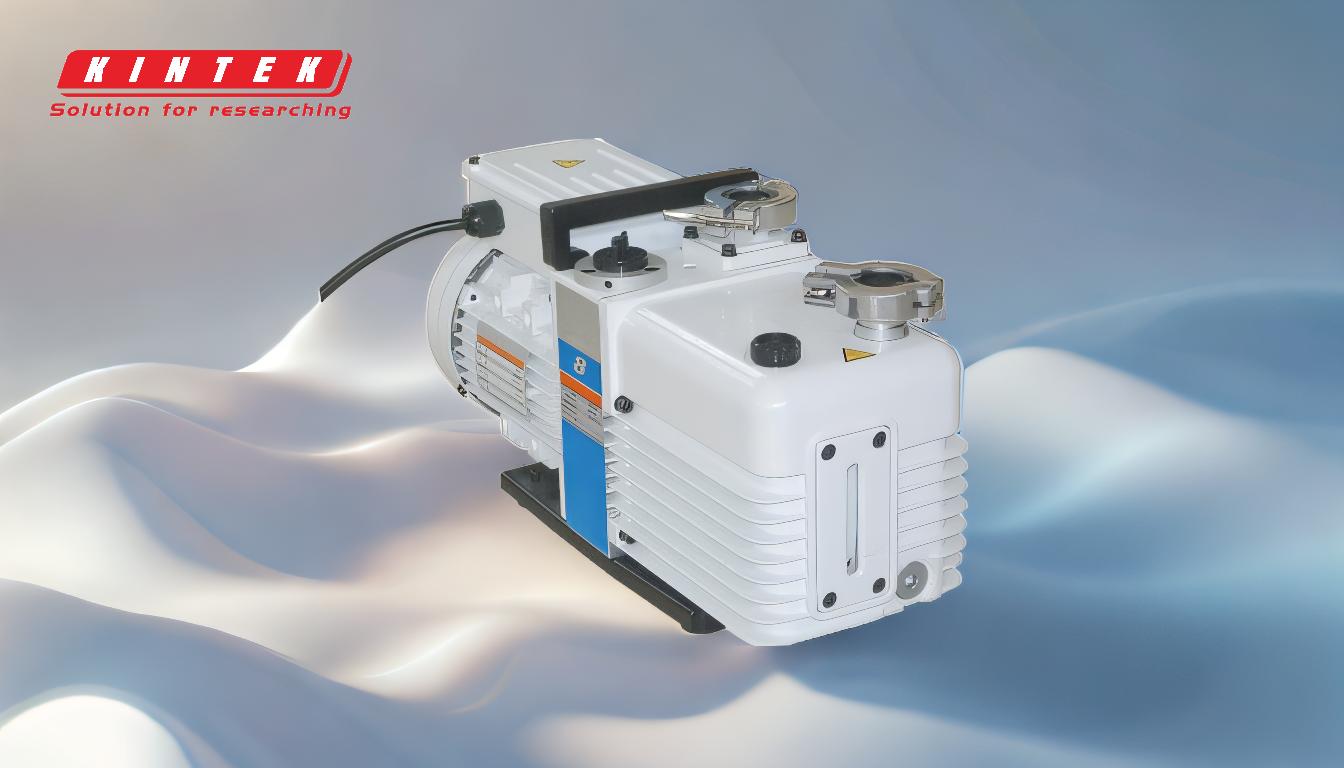Rotary vane and liquid ring vacuum pumps are both widely used in industrial applications, but they differ significantly in design, operation, and suitability for specific tasks. Rotary vane pumps are oil-sealed, cost-effective, and ideal for continuous suction and dry gas extraction, often used in environments like hydraulic brake systems and mass spectrometry. However, they require oil maintenance and can produce toxic waste. Liquid ring pumps, on the other hand, use a liquid (often water) to create a seal, forming a liquid ring as the rotor spins. They are better suited for handling wet or corrosive gases and are more durable in harsh conditions, though they may require more energy and maintenance for the liquid seal. Understanding these differences helps in selecting the right pump for specific applications.
Key Points Explained:

-
Design and Operation:
-
Rotary Vane Pump:
- Uses variable-length vanes mounted on an off-center rotor.
- The vanes form chambers that expand to draw in fluid and contract to expel it.
- Oil is used for sealing and lubrication, ensuring tight seals and consistent vacuum pressures below 10^-3 mbar.
-
Liquid Ring Pump:
- Features fixed vanes attached to the rotor.
- A liquid (often water) is drawn into the chamber due to the rotor's eccentricity.
- Centrifugal force forms a liquid ring against the housing, creating a seal and enabling gas compression.
-
Rotary Vane Pump:
-
Applications:
-
Rotary Vane Pump:
- Commonly used in hydraulic brake systems, freeze dryers, and mass spectrometry.
- Ideal for applications requiring continuous suction and dry gas extraction.
- Can operate directly in the atmosphere with the help of air filters to remove dust particles.
-
Liquid Ring Pump:
- Better suited for handling wet or corrosive gases.
- Often used in industries like chemical processing, where durability in harsh conditions is essential.
- Preferred for applications involving condensable vapors or where oil contamination is a concern.
-
Rotary Vane Pump:
-
Advantages:
-
Rotary Vane Pump:
- Cost-effective and widely available.
- Provides strong, consistent vacuum pressures.
- Simple to use and maintain in atmospheric conditions.
-
Liquid Ring Pump:
- No oil is required, reducing the risk of contamination.
- Can handle wet or corrosive gases more effectively.
- Durable and reliable in demanding environments.
-
Rotary Vane Pump:
-
Disadvantages:
-
Rotary Vane Pump:
- Requires oil, which can lead to toxic waste and environmental concerns.
- Replacement parts can be difficult to source.
- Not suitable for handling wet or corrosive gases.
-
Liquid Ring Pump:
- Higher energy consumption due to the need to maintain the liquid ring.
- Requires regular maintenance to manage the liquid seal.
- May not achieve as high a vacuum level as rotary vane pumps.
-
Rotary Vane Pump:
-
Maintenance and Environmental Impact:
-
Rotary Vane Pump:
- Oil changes and disposal can be costly and environmentally challenging.
- Regular maintenance is required to ensure optimal performance and prevent oil contamination.
-
Liquid Ring Pump:
- Maintenance focuses on managing the liquid seal and preventing corrosion.
- Environmentally friendlier due to the absence of oil, but liquid management is still necessary.
-
Rotary Vane Pump:
-
Cost and Availability:
-
Rotary Vane Pump:
- Generally cheaper and more readily available.
- Suitable for budget-conscious applications where oil waste is manageable.
-
Liquid Ring Pump:
- Higher initial cost due to more complex design and materials.
- Preferred for specialized applications where oil-free operation is critical.
-
Rotary Vane Pump:
By understanding these differences, equipment purchasers can make informed decisions based on their specific needs, such as the type of gas being handled, environmental considerations, and operational requirements.
Summary Table:
| Feature | Rotary Vane Pump | Liquid Ring Pump |
|---|---|---|
| Design | Oil-sealed, variable-length vanes on an off-center rotor | Liquid-sealed, fixed vanes with a liquid ring formed by centrifugal force |
| Applications | Hydraulic brake systems, freeze dryers, mass spectrometry | Chemical processing, wet/corrosive gas handling |
| Advantages | Cost-effective, consistent vacuum, simple maintenance | No oil contamination, handles wet/corrosive gases, durable in harsh conditions |
| Disadvantages | Requires oil maintenance, toxic waste, not suitable for wet/corrosive gases | Higher energy consumption, regular liquid seal maintenance, lower vacuum levels |
| Maintenance | Oil changes, disposal challenges, regular maintenance | Liquid seal management, corrosion prevention |
| Cost | Cheaper, widely available | Higher initial cost, specialized applications |
Still unsure which vacuum pump is right for your needs? Contact our experts today for personalized advice!


